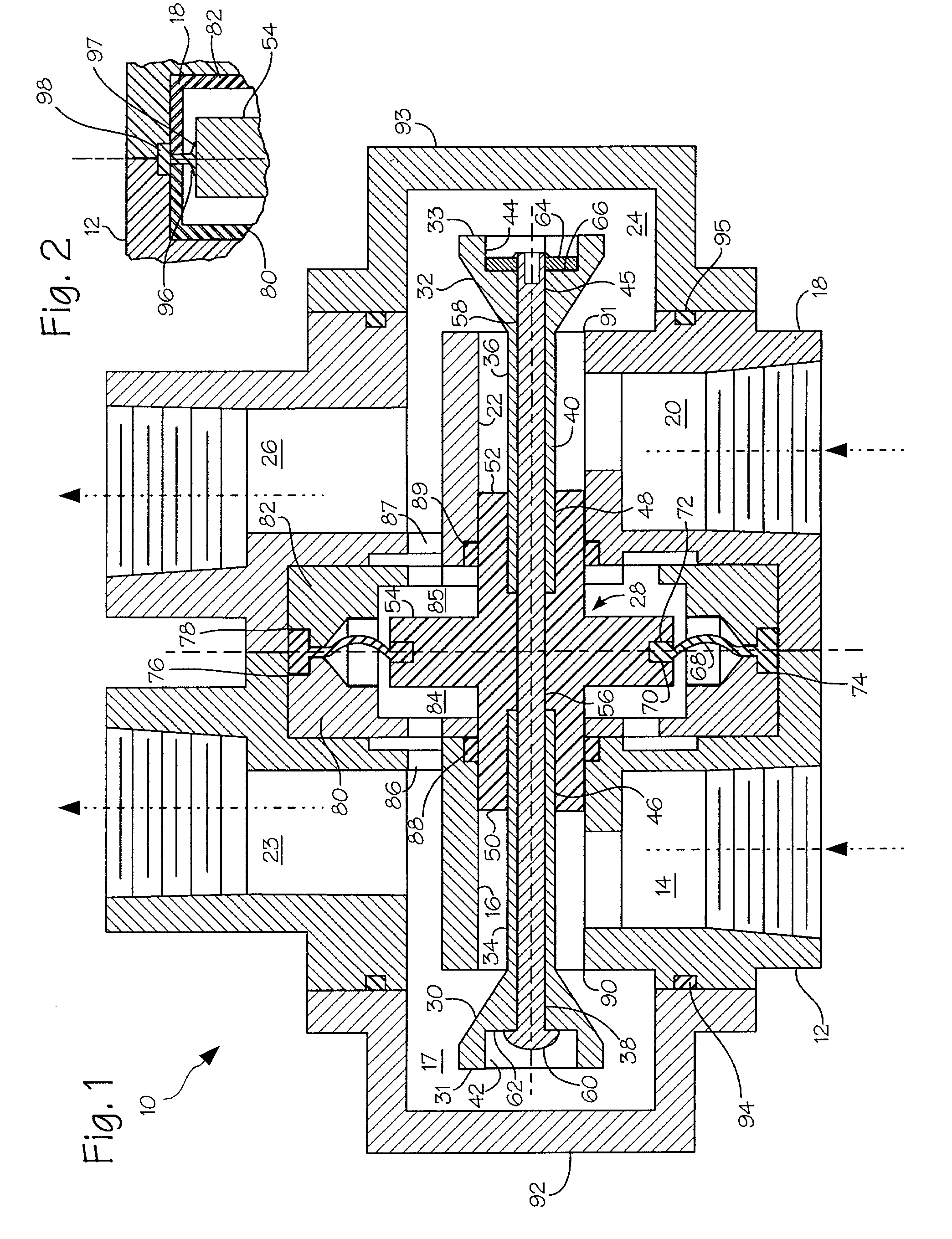Pressure balancing valve
a technology of pressure balancing valve and spool, which is applied in the field of valves, can solve the problems of reducing the flow passage of the spool section, unable to permit the use of materials of lower strength, and limiting the pressure passage of the prior art valve with its spool, etc., and achieves the effect of eliminating the pressure bleed passag
- Summary
- Abstract
- Description
- Claims
- Application Information
AI Technical Summary
Benefits of technology
Problems solved by technology
Method used
Image
Examples
Embodiment Construction
[0014] Referring now to the drawings, the invention will be described in more detail.
[0015] Referring to FIG. 1, the preferred embodiment of the invention assembly is generally indicated at 10 with a first housing 12 having a first fluid inlet 14, a fluid passage bore 16, and a chamber 17, all communicating with a discharge passage 23; a second housing 18 having a second fluid inlet 20, a fluid passage bore 22, and a chamber 24 all communicating with a discharge passage 26. A spool assembly indicated at 28 and within Assembly 10 comprises poppets 30 and 32 which are formed with respective connecting members 34 and 36 having bores 38 and 40 therethrough and axially connect with counter bores 42 and 44 formed in the non-seating sides of poppets 30 and 32. Poppets 30 and 32 with their respective connecting members 34 and 36 are received within respective counter bores 46 and 48 of respective bosses 50 and 52 which are axially positioned on opposite sides of disk member 54 having a bore...
PUM
 Login to View More
Login to View More Abstract
Description
Claims
Application Information
 Login to View More
Login to View More - R&D
- Intellectual Property
- Life Sciences
- Materials
- Tech Scout
- Unparalleled Data Quality
- Higher Quality Content
- 60% Fewer Hallucinations
Browse by: Latest US Patents, China's latest patents, Technical Efficacy Thesaurus, Application Domain, Technology Topic, Popular Technical Reports.
© 2025 PatSnap. All rights reserved.Legal|Privacy policy|Modern Slavery Act Transparency Statement|Sitemap|About US| Contact US: help@patsnap.com


